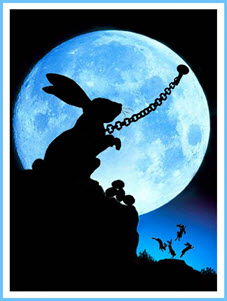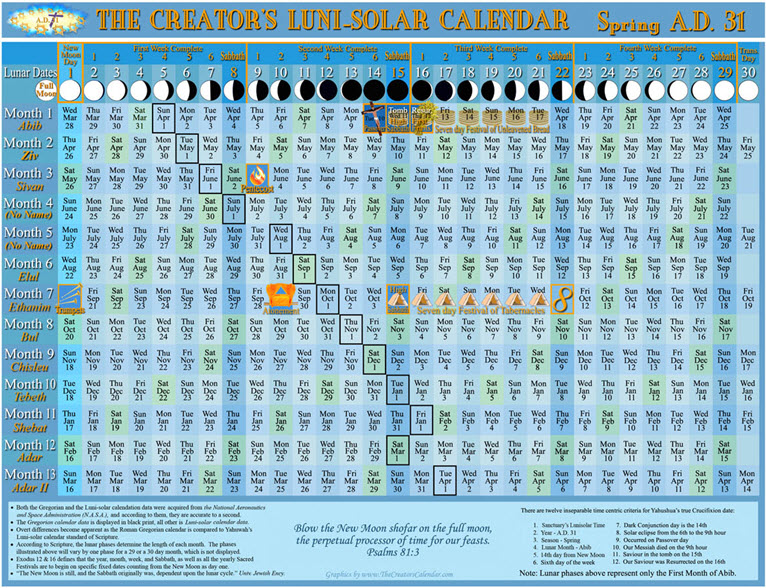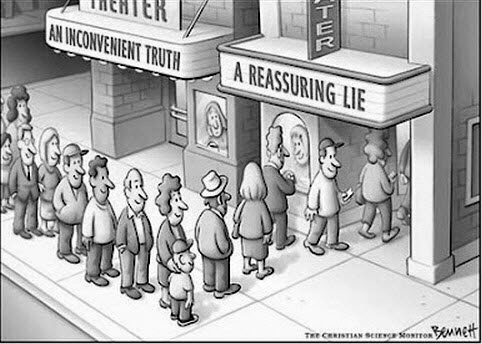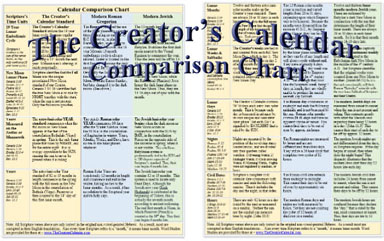Why Must Rome Fix Easter to the Full Moon? Part 2
Why Must Rome Continue to
Fix Easter to the Full Moon?
Part 2

Reexamining History: The Shift from Passover to Easter
From as early as the first century B.C., Julius Caesar implemented a radical departure from the Creator’s original calendar. His reforms detached the Roman calendar from the natural rhythms of the moon, effectively erasing the use of the full New/Renewed Moons to mark years, lunar months, lunar Sabbaths, and annual lunar appointed Feast Days. This transformation established a fixed solar system of timekeeping, severing Rome from the celestial markers long used to determine sacred observances.
Yet, in an ironic twist—whether by unintended consequence or divine intervention—Rome later found itself compelled to reintroduce elements of the lunar calendar. This adjustment was not to honor the Scriptural reckoning of time, but rather to ensure that Easter, the newly established Christian festival, would never align with the Jewish Passover. To achieve this, Rome had to rely on the full moon, a fundamental component of the very lunar system it had once abandoned.
This shift is no small detail. It serves as a profound historical marker that Easter, as it is widely celebrated today, is a construct detached from the Scriptural Passover. The Passover date, originally determined by counting fourteen days from the New Moon, aligns with the biblical calendar, while Easter’s determination—set as the first Sunday after the full moon following the vernal equinox—follows a distinctly different paradigm.
The Intentional Divergence
As tensions between Rome and the Jewish community escalated, Rome sought to establish its own version of the salvation narrative—one that would distance itself from the Torah Law of Scripture. Church authorities insisted that Easter should never coincide with the original Jewish Passover. Yet, to ensure consistency, they had no choice but to continue utilizing the same original lunar cycle that had governed Biblical timekeeping. The 19-year Metonic cycle, which occasionally includes 13-month years, remained a necessary tool for Rome’s Easter calculations.
However, rather than counting fourteen days from the full moon to determine Passover, as Scripture prescribed, Rome introduced two key changes. Beginning in the early fourth century A.D., under the rule of Emperor Constantine, Easter was officially fixed to Sunday. This meant that rather than following the Biblical reckoning of time, Easter would always be the first Sunday after the full moon following the equinox.
The Council of Nicaea solidified this change, marking a decisive break from the Biblical timekeeping system. The historian Heinrich Graetz records Emperor Constantine’s remarks on the matter:
“At the Council of Nice [Nicaea], the last thread was snapped which connected [Roman] Christianity to its parent stock. The festival of Easter had up till now been celebrated for the most part at the same time as the Jewish Passover [by all the Messiah’s followers], and indeed upon the days calculated and fixed by the Synhedrion [Sanhedrin] in Judea for its celebration; but in future its observance was to be rendered altogether independent of the Jewish calendar. ibid
‘For it is unbecoming beyond measure that on this holiest of festivals we should follow the customs of the Jews. Henceforward, let us have nothing in common with this odious people; our Savior has shown us another path. It would indeed be absurd if the Jews were able to boast that we are not in a position to celebrate the Passover without the aid of their rules.’” Heinrich Graetz, History of the Jews, Vol. II, pp. 563-564.
Thus, Rome’s intention was clear: to separate Christianity from its roots in the Torah Law, not only in doctrine but also in timekeeping.
The Calendar Controversy and Its Lasting Effects
In the wake of these changes, Jewish leaders also altered their calendar, shifting their New Moon designation from the full moon to the dark conjunction approximately 30 years later. Whether this was a reaction to Constantine’s decree or an independent decision, the result further distanced Jewish practices from the early Messianic movement. This shift in time measuring may have served as a defense against claims that Yahusha haMashiach (Jesus Christ) was indeed the prophesied Messiah, as it obscured the original timing of His resurrection. Ultimately, this would have separated them far from any negative entanglements with the Yahusha, the professed Messiah of the first century A.D.
Two Witnesses to the Change
Two significant witnesses confirm that a calendar shift did, in fact, occur and continues to this day:
- The Standard of Time – The natural celestial cycles still function as they always have, providing an enduring testimony to the Creator’s original system. The full New/Renewed Moon continues to mark the passage of months, just as it did in Biblical times, all without any loss of days.
- Rome’s Own Actions – Despite adhering to a solar-based calendar for nearly all official timekeeping, Rome still relies on lunar calculations to determine Easter. This reliance suggests that the original method of reckoning sacred time, as practiced in the Messiah’s day, was based on lunar cycles. Otherwise, why would Rome feel compelled to incorporate elements of the very system it sought to replace?
Even so, rather than following the Scriptural method of counting fourteen days from the full New/Renewed Moon to determine Passover, Rome ensured Easter would always fall on a Sunday—further solidifying its departure from the Biblical model.
The Consequences of Tradition Over Truth
Today, both Rome and its theological descendants continue to celebrate Easter with customs that obscure its historical roots. Whether through sunrise services, Easter cantatas, or other long-held traditions, many have unknowingly embraced a narrative that diverges from Scriptural truth.
At the same time, Rabbinical Judaism, by altering the method of determining the full New/Renewed Moon, has distanced itself from the prophetic significance of the Messiah’s resurrection. Both systems—one rooted in Rome’s ecclesiastical authority and the other in later Rabbinical tradition—have contributed to a widespread misunderstanding of the original and authentic Biblical calendar and its role in revealing the Messiah’s mission.
By modifying the timing of Passover, the appointed sign of the true Lamb’s sacrifice and resurrection, Rome and later Jewish authorities have unwittingly obscured the pathway that leads believers back to the Father and His Eternal Standard of Righteousness—the Ten Commandments.
A Call to Reexamine
The strategic reshaping of the sacred calendar has led countless sincere believers away from recognizing the Scriptural importance of Yahuah Alahim’s lunar-appointed Feast Days. These mo’edim (H#4150 – מועדים- lunar-appointed times) were divinely designed to mark the Messiah’s redemptive work—from the Passover sacrifice to the final restoration of humanity. Yet, through Rome’s blending of truth with error, the prophetic significance of these lunar-appointed Feast Days has been largely forgotten.
Rome’s version of the resurrection has been interwoven with Easter eggs, fertility symbols, and elements of ancient sun worship, further diverting attention from the true Biblical calendar. The very day established to commemorate the Messiah’s sacrifice has been displaced by traditions rooted in the Julian calendar’s solar cycle, with Sunday, the day of sun worship, at its center.
This historical reality invites us to reexamine long-held assumptions and seek a deeper understanding of the Creator’s appointed times. What if the Biblical calendar—the one established from the very beginning—holds the key to restoring the fullness of the Messiah’s END TIME message?
For those who desire to walk in the truth, exploring these historical shifts with an open mind is not merely a theoretical exercise; it is an opportunity to align our lives with the divine rhythm established by the Creator Himself. Refer to The Mo’edim and the Missing Key Puzzle Piece.
Two Witnesses to a Calendar Shift
Two key witnesses testify that a calendar shift did, in fact, take place—and its effects persist to this day. The first is the standard of time itself, which remains untouched by human hands. The celestial cycles still declare the Creator’s original design, with the full New Moon marking the beginning of months as it did in ancient times. The second witness is the very actions of Rome. If the Julian calendar was sufficient on its own, why did Rome feel compelled to incorporate elements of the lunar system, such as the 19-year Metonic cycle and the occasional 13-month year? The only logical explanation is that the original method of timekeeping—used at the time of the Messiah’s resurrection—was still being followed by the Jewish people 300 years later. Yet, rather than counting fourteen days to Passover as Scripture prescribed, Rome fixed Easter to a Sunday, further divorcing it from its Biblical roots.
Today, both Rome and its theological descendants—those who observe Easter sunrise services or sing in Easter cantatas—have embraced traditions that obscure the truth. Meanwhile, Rabbinical Judaism has distanced itself from any discussion of the Messiah’s arrival, further complicating the search for clarity. Neither approach aligns with the original calendar or the Messiah’s appointed pathway back to the Father.
By altering the timing of Passover, Rome and later Rabbinical authorities have unwittingly positioned themselves as gatekeepers of a historical divergence. This deliberate shift has led countless sincere believers away from recognizing the Scriptural lunar-appointed Feast Days, which serve as prophetic markers of the Messiah’s redemptive work. As a result, many have lost the opportunity to fully grasp the significance of these feasts in restoring humanity back to the Father.
The Greatest Calendar Manipulation in History
The Roman Church’s version of the resurrection has been interwoven with symbols of fertility and sun worship, from Easter eggs to bunnies, further distorting the Biblical narrative. This confusion has led to the desecration of Passover—the most sacred day of the year—by aligning it with Sunday, the day historically dedicated to the worship of the sun god, Tammuz. Easter Sunday stands as a monument to Rome’s strategic blending of biblical truth with pagan tradition.
Rome’s influence extends far beyond Easter. The entire modern calendar, with its unbroken cycle of weekdays, subtly reinforces a rebellious system that deviates from Scripture. Each day is named after a pagan deity, replacing the Creator’s divinely appointed timekeeping system. In this way, Rome has fulfilled the prophecy of Daniel 7:25, having “thought to change times and laws,” deceiving the whole world.
This represents the greatest calendar manipulation in history. Scriptural truth has been proactively replaced with a global deception. If people could remove their blinders and examine the facts, they would see that neither Saturday nor Sunday holds any special sanctity ir jordan 11 bred game worn 1996 finals auctio in the original Biblical reckoning of time.
Many assume that the modern Gregorian calendar is identical to the one used during the Messiah’s time or, at the very least, that a continuous seven-day weekly cycle existed back then. However, historical records tell a different story. At the time of the crucifixion, the Roman Empire followed an eight-day nundinal week, a system established by Julius Caesar in 45 B.C. It wasn’t until Emperor Constantine’s reforms in A.D. 325 that the Roman week transitioned to a seven-day cycle.
This presents a serious contradiction. If the Israelites had been observing a seventh-day Sabbath on an eight-day cycle, the two systems would have been irreconcilable. Since A.D. 358, they have operated under two different calendars: the Julian civil calendar for administrative purposes and the Hebrew lunisolar calendar, which was divinely instituted and remained the standard for worship. This Hebrew system, still beaconed by the full New Moon each month, was the one in effect during the Messiah’s lifetime.
Misinterpretations of the Crucifixion Year
 A further layer of confusion arises from the widespread belief that the crucifixion occurred in A.D. 33. This claim gained traction in the early 18th century when Sir Isaac Newton published Observations Upon the Prophecies of Daniel and the Apocalypse. Newton argued that Easter Sunday had to align with the 16th of the month of Abib, dismissing A.D. 31 as a possible crucifixion year. In response, the Roman Catholic Church officially adopted A.D. 33 to maintain continuity with their Easter tradition.
A further layer of confusion arises from the widespread belief that the crucifixion occurred in A.D. 33. This claim gained traction in the early 18th century when Sir Isaac Newton published Observations Upon the Prophecies of Daniel and the Apocalypse. Newton argued that Easter Sunday had to align with the 16th of the month of Abib, dismissing A.D. 31 as a possible crucifixion year. In response, the Roman Catholic Church officially adopted A.D. 33 to maintain continuity with their Easter tradition.
However, this decision was based on an erroneous assumption: that the Roman planetary week, with its continuous seven-day cycle, was in use during the Messiah’s time. In reality, the Julian eight-day cycle governed Rome, while the Hebrews followed the lunisolar system. Newton’s attempt to reconcile the two resulted in a flawed conclusion—one that has influenced religious doctrine for nearly 300 years.
Newton himself admitted his assumption, writing:
“I take it for granted that the passion was on Friday the 14th day of Nisan, the great feast of the Passover [Feast of Unleavened Bread] on Saturday the 15th day of Nisan, and the resurrection on the day following.” Observations Upon the Prophecies of Daniel and the Apocalypse, 1733, p. 160.
Yet, this assumption does not align with historical reality. The Julian calendar of Newton’s time bore little resemblance to the one in place at the time of the crucifixion. Newton’s calculations, though mathematically sound, were based on an anachronistic framework.
A Call to Reexamine the Evidence
These historical shifts invite us to question long-held assumptions. If the early Julian calendar followed an eight-day cycle, and if the Hebrew calendar was lunisolar, then the modern concept of a continuous seven-day week simply does not fit the historical timeline of the Messiah’s crucifixion and resurrection.
Rome’s proactive role in altering sacred timekeeping has had profound effects on both Jewish and Christian traditions. By shifting Passover away from its Biblical roots and aligning Easter with a solar-based system, Rome has obscured the Creator’s appointed times. This has resulted in generations of believers unknowingly following a calendar that was never divinely ordained. It’s like boarding the wrong ir jordan 3 whataburger custom train; you will arrive, but not at your desired destination.
For those who seek truth, this is more than a hypothetical discussion—it is an invitation to return to the Biblical rhythm of worship. The evidence is compelling: the Creator’s original calendar remains visible in the heavens, and its appointed times continue to bear witness to the Messiah’s mission. The question remains: Will we have the courage to follow where the truth leads in spite of the opposition and the popular paradigm?
A.D. 31 Calendar Year Overlay of the Crucifixion and Resurrection
The calendar of A.D. 31 presents a fascinating intersection of two distinct timekeeping systems: the Scriptural astro-luni-solar calendar and the Roman Gregorian calendar. This comparison allows us to examine how time was reckoned during the Messiah’s crucifixion and resurrection. The astro-luni-solar calendar aligns with the moon’s phases, marking the beginning of each month with the full New Moon day, while the Roman calendar follows a continuous weekly cycle detached from celestial markers.
Click the image to make it larger.
A Tale of Two Calendars
While the Roman system displays dates in a linear fashion, the Creator’s calendar integrates the sun, moon, and stars into a unified timekeeping framework. The contrast between these systems became particularly evident during the centuries of Roman rule over the Jewish people. Under increasing pressure, by A.D. 358, the Jewish leadership formally adopted elements of the Roman system, incorporating the Babylonian dark/crescent New Moon and the uninterrupted weekly cycle. This shift necessitated the introduction of the Rules of Postponement to ensure that feast days did not conflict with the adopted Saturday Sabbath. Prior to this adaptation, such conflicts had never arisen, indicating a fundamental change in calendrical reckoning.
The Challenge of Paradigms
It is often asserted that the lunar Sabbath is the system that “floats” through the modern Gregorian calendar. However, this perspective may be shaped more by cultural conditioning than by historical fact. Just as a traveler on a river air jordan 6 toro might perceive the stationary landscape as drifting by, so too might our ingrained acceptance of a continuous weekly cycle influence our view of time. In reality, the Scriptural Sabbath remains firmly anchored to the Creator’s appointed time structure, while the Roman calendar has detached itself from these celestial markers.
The Three Days and Three Nights
The Messiah’s crucifixion, burial, and resurrection align precisely with the Scriptural lunE Feast Days: Passover (Abib 14), Unleavened Bread (Abib 15), and First Fruits (Abib 16). These days, established by Yahuah and revealed to Moses, serve as prophetic markers of the Messiah’s mission. The timing of these events, beginning on the darkest night of the month and culminating in His resurrection, demonstrates their significance as divinely appointed milestones in the Plan of Redemption.
The Sacred Feasts and the Role of Israel
The Scriptural feast days were given not exclusively to the Jewish people but to all humanity as a means of understanding the Creator’s plan for salvation. Israel’s role was to guard and share these divine oracles, yet its history—marked by obedience and backsliding—mirrors the spiritual journey of humanity at large. Its periods of captivity in Egypt, Babylon, and Rome serve as powerful metaphors for the broader struggle between divine truth and human traditions.
Who Remains in Captivity Taylor Swift & Sabrina Carpenter's Height Contrasts at AMAs Go Viral?
Today, the entire world remains in Roman captivity under the influence of her timekeeping. The shift away from the Creator’s calendar has led to a departure from His appointed times, leaving many unaware of the original sacred rhythm. Yet, the Messiah continues His redemptive work, offering freedom to those who seek to walk in harmony with the divine blueprint.
What Truly Ended at the Cross?
The sacrificial system of the earthly temple was fulfilled at the crucifixion, as the Messiah—the true Passover Lamb—who offered His life for the redemption of humanity. However, this did not signify the abolition of divine laws or lunar appointed times. Rather, it marked the transition from earthly types and shadows to their heavenly realities. The Messiah now serves as our High Priest in the heavenly sanctuary, interceding on our behalf, continuing to utilize lunar appointed time, until His work of atonement is complete.
The Prophetic Significance of the Appointed Times
Passover was the first of the sacred feast days to be fulfilled in real time, followed by the resurrection on First Fruits the 16th. Each event unfolded precisely according to the astro-luni-solar calendar, underscoring the Creator’s sovereign design. As the Messiah fulfilled the spring feasts with exact precision, so too will His second coming align with the lunar appointed fall Feasts, fulfilling the prophetic timeline in a day-for-a-day manner.
“For Yahusha Himself will descend from heaven with a shout, with the voice of an archangel, and with the trumpet of Alahim. And the dead in the Messiah will rise first. Then we who are alive and remain shall be caught up together with them in the clouds to meet Yahusha in the air. And thus we shall always be with Yahusha. Therefore comfort one another with these words.” 1 Thessalonians 4:16-18 NKJV
“But now He [Messiah] has obtained a more excellent ministry, inasmuch as He is also Mediator of a better covenant, which was established on better promises.” Hebrews 8:6 NKJV
It is no secret that the New Moon governed the very system set up by Yahuah and shown to Moses for its years, months, weeks, and civil calendar dates. Yet, by 45 B.C., the Romans decided to reckon time according to the sun (solar) only and removed themselves from astro-luni-solar calendation altogether. That year, Julius Caesar established the Julian calendar in place of, and in opposition to, the three-part orchestration of the sun, moon, and stars. In this way, they removed themselves from the binding claims of the Creator and His laws that synchronized time. Rome designed a year that commenced in winter instead of spring, months with varying lengths, and weeks of eight days that cycled without end. Lastly, Rome’s days were to begin at midnight instead of sunrise. In contrast to the “twelve-hour” days of Scripture, the night has been lumped into the “day,” giving Сумка на пояс бананка sambag tirso msh шоколадна — цена 500 грн в каталоге Бананки ✓ Купить аксессуары по доступной цене на Шафе , Украина #119298559 humankind a twenty-four-hour “day.”
Yahusha answered, “Are there not twelve hours in the day? If anyone walks in the day, he does not stumble, because he sees the light of this world.” John 11:9-10 NKJV
No Units of Time Remain Intact Among the Romans and Jews Today
“It shall be established forever like the moon, even like the trustworthy witness in the sky.” Psalms 89:37
Astro-luni-solar time utilizes the earth’s rotation in relation to the sun, moon, and stars (Genesis 1:14-18). From the earth’s perspective, the sun, ruling by day, measures off twelve-hour days and solar years. The New Moon, by night, demarcates the count of days and lunisolar years, while her phases demarcate one day from the next with a monthly lunar date. The stars, by night, divide the day from the night and give visual markers for defining and separating the four night watches. This time continues to be the most accurate timekeeping system on the earth as it was divinely designed to work in three-part harmony without any need for Rules of Postponement, mathematical calculations, ecclesiastical full moons, or Dominical Letters.
From One New Moon to Another
The Eternal Father made no mistakes with His marvelous creation and His grand principles of light that govern time from the heavens, as they never change (Malachi 3:6). This is why only His time-keeping system will be utilized throughout all eternity, “from one New Moon to another” (Isaiah 66:23). It is Rome who has disassociated herself from the actual “times and laws” of Yahuah’s Torah, with its perceived loathsome and binding requirements. As a ruling power that has united church and state, she has sought to portray only the illusion of the Scriptural truths, all the while leading millions to acquire the form of godliness but deny the power that would bring the soul to humility and confession of sin. The sacred days or holidays you choose to keep and the calendar upon which you desire to observe them appear will ultimately determine your eternal destiny.
The loud cry is now going forth to everyone in this world. Can you hear it? Your loving Father is calling His would-be faithful followers to come out of all the false teachings of the world’s pagan and illegitimate customs and be separate. What will your decision be? Who will you serve and worship? With its inconvenient truth, will your choice be the Creator of the shamayim (heavens) and earth? Or will your choice be to follow after the craftsmanship of a counterfeit paper wall calendar with its reassuring lie?

The Consequences of Calendar Reform
The modern world has largely embraced the Gregorian calendar, often without questioning its origins. Yet, Daniel 7:25 warns of a power that would “intend to change times and law,” a description that aligns with Rome’s historical role in altering the Creator’s appointed times. This shift has led to the replacement of the Scriptural, lunar appointed Feast Days with man-made holidays, such as Easter and Christmas, which bear no connection to the Creator’s prophetic calendar.
Restoring the Creator’s Timepiece
The heavens declare the glory of Yahuah, and His celestial timepiece remains unchanged. Isaiah 66:23 affirms that “from one New Moon to another,” worship will be restored according to His divine order. The call to return to the Creator’s calendar is not merely an academic exercise—it is an invitation to align our lives with His sacred rhythm.
As we explore these historical shifts with open minds, we are invited to reconsider deeply held assumptions about time and worship. Could it be that the restoration of the Creator’s calendar holds the key to a deeper understanding of His plan? The journey toward truth begins with a willingness to seek, study, and embrace the divine order set forth from the foundation of the world.

